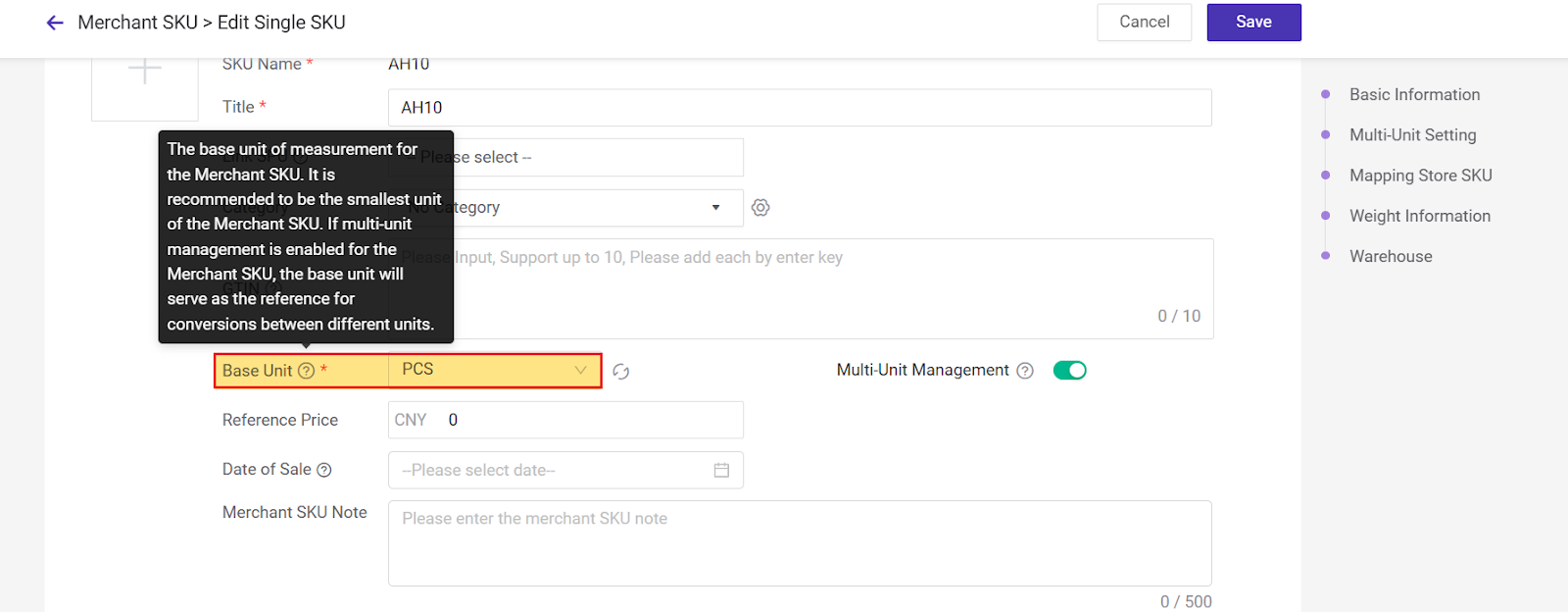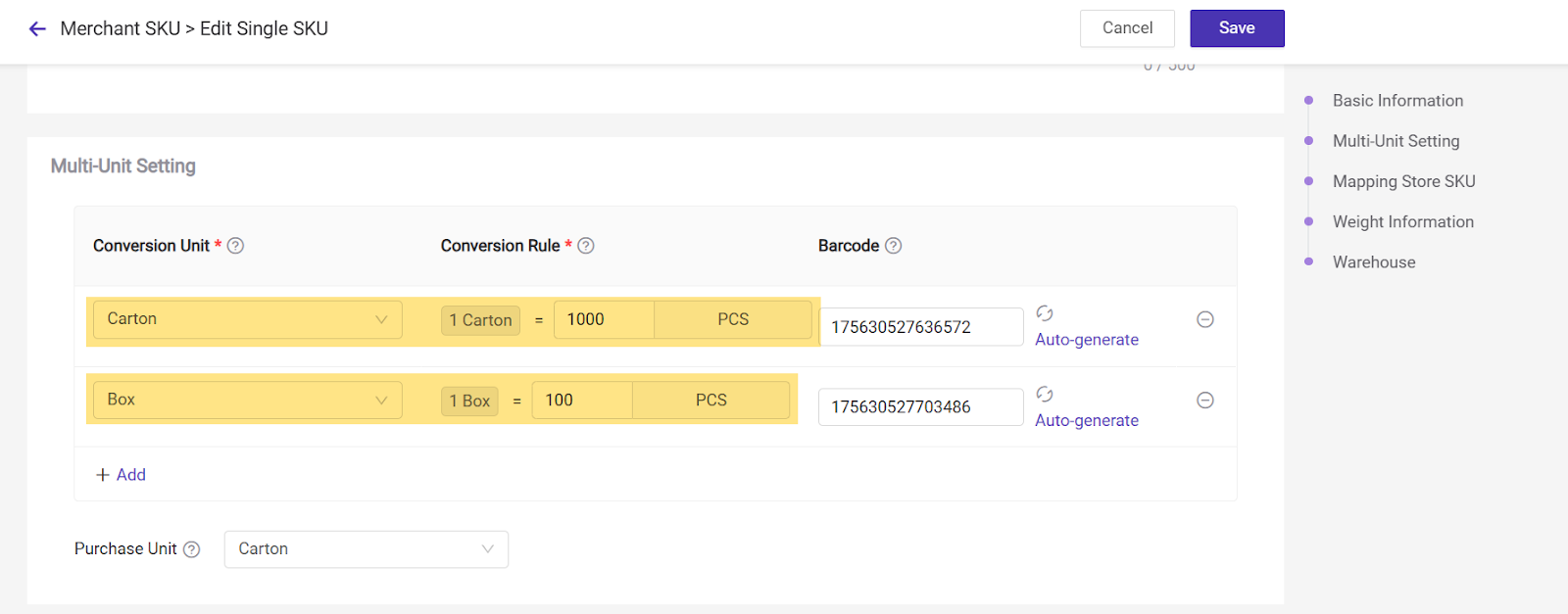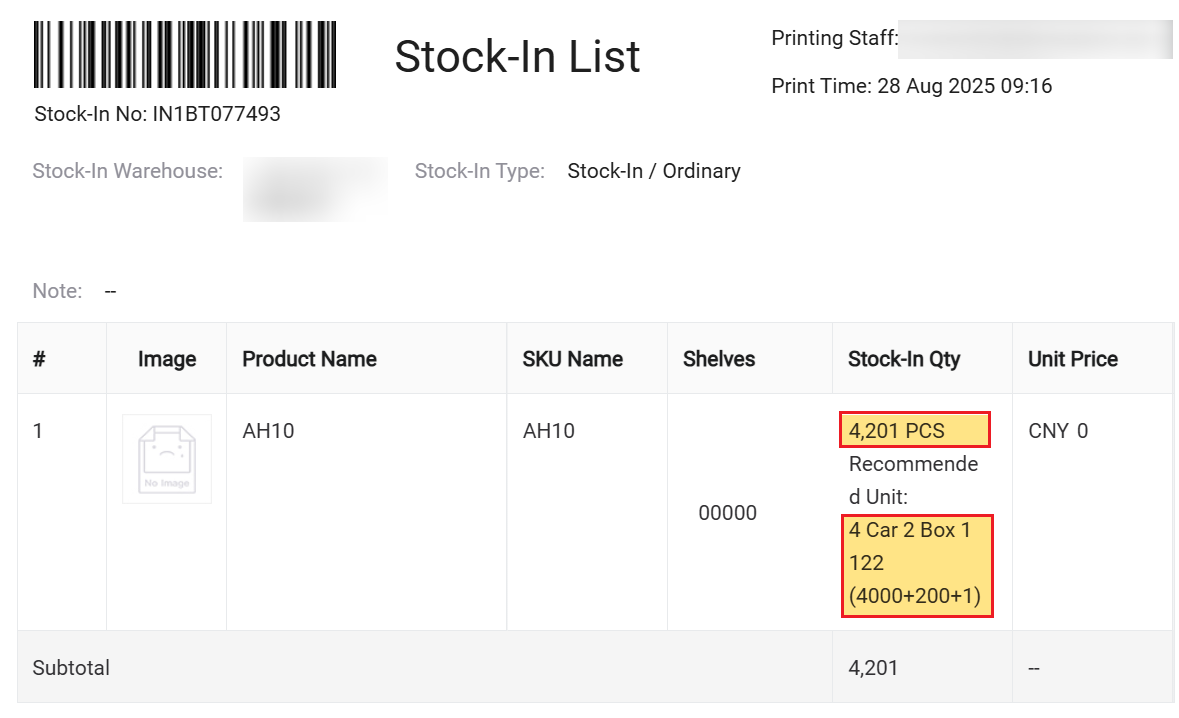How E-Commerce Sellers in Malaysia Can Manage Inventory Across Multiple Units
Erra 28 Aug 2025 08:52ENCopy link & title
Inventory management can be tricky for e-commerce sellers in Malaysia, especially when products come in different units. A single item might be purchased in bulk, stored in smaller packs, and sold individually. In this article, we look at the common challenges sellers face with multi-unit inventory and what causes stock and operational issues.
Common Problems Across the E-Commerce Supply Chain in Malaysia
Managing inventory across multiple units creates challenges at nearly every stage of the e-commerce workflow. For Malaysian sellers, these issues are amplified by the need to handle products from international suppliers, multiple platforms, and varying packaging sizes.
1. Purchasing Confusion
Sellers often purchase items in bulk but sell them in smaller units. Without a clear system, they must constantly calculate how many base units they actually need. Miscalculations can lead to overstocking, cash flow issues, or running out of stock unexpectedly.
2. Warehouse Headaches
Stock-in and stock-out become prone to errors when storage units differ from sales units. For example, staff might miscount cartons as boxes or forget to convert quantities. This can result in inaccurate inventory levels, misplaced items, and wasted labor.

3. Order Fulfillment Challenges
If unit conversions aren’t handled properly, sellers risk sending the wrong quantity to customers. This leads to returns, negative reviews, and decreased customer satisfaction, issues that can be particularly damaging in highly competitive marketplaces like Shopee, Lazada, and TikTok Shop.
4. Reporting and Decision-Making Issues
Analytics such as stock turnover rates, reorder suggestions, and profit calculations rely on consistent base units. Without them, reports can be misleading, making it harder for sellers to plan purchases, forecast demand, or scale their business efficiently.
These problems are especially common in Malaysia’s e-commerce environment, where sellers juggle multiple SKUs, international sourcing, and a mix of bulk and retail sales. Managing these complexities manually wastes time and increases the risk of costly errors.
Streamlining Inventory with BigSeller’s Multi-Unit Management
For sellers juggling multiple units of the same product, manual calculations can be time-consuming and error-prone. BigSeller’s Inventory Multi-Unit Management solves this by automating conversions and providing full control over how stock is tracked, purchased, and sold.
Here’s how it works:
1. Define a Base Unit
The base unit is the smallest measurable unit of a product, such as “pcs.” All calculations in the system revolve around this unit, ensuring consistency across purchases, stock operations, and sales.

2. Add Multiple Conversion Units
Sellers can define additional units used for bulk purchases, warehousing, or sales like “box,” “bundle,” or “carton.” Each conversion unit is linked to the base unit with a defined ratio.
Example: If 1 box = 100 pcs and 1 carton = 1,000 pcs, recording a stock-in of 2 cartons + 5 boxes automatically updates the inventory as 2,500 pcs. This eliminates manual conversions and reduces errors.

3. Automate Conversions Across Operations
Every stock movement whether purchasing, transferring, stocking out, or fulfilling orders is automatically calculated in base units. Sellers no longer need to worry about miscounting different units.
Additional Features:
-
Flexible Setup: Enable multi-unit management globally or for individual SKUs.
-
Barcode Integration: Assign unique barcodes to each unit for faster scanning in the warehouse.
-
Document Support: Print pick lists, pack lists, and labels that display both base and conversion units.
The Result: Sellers gain accurate inventory, faster operations, and reduced stress, even when managing complex products with multiple units. It’s a practical solution for businesses that want to streamline inventory without adding manual work.

Take the Guesswork Out of Inventory
For many Malaysian e-commerce sellers, keeping track of stock across cartons, boxes, and individual units is a constant source of mistakes and wasted time. Manual calculations can lead to overselling, stock discrepancies, and headaches in both the warehouse and on the sales floor.
BigSeller’s Inventory Multi-Unit Management addresses these challenges directly. By automating unit conversions, supporting SKU-level flexibility, and integrating barcodes for each unit, sellers can handle purchases, stock transfers, and order fulfillment with precise numbers.
Try BigSeller for free today and see how clear, accurate inventory management can change the way your business operates.
Follow our WhatsApp Channel for practical tips and feature updates designed for Malaysian sellers.



